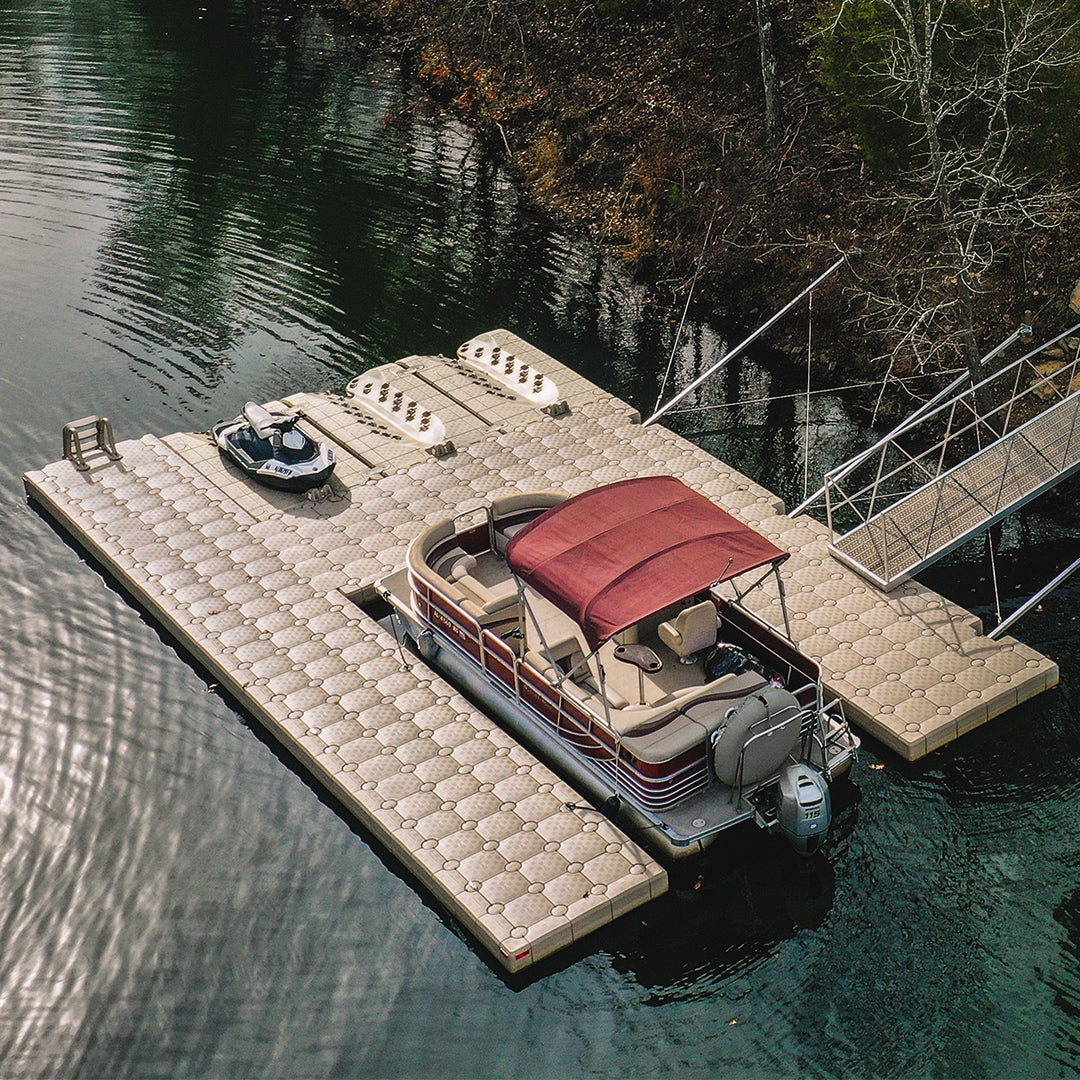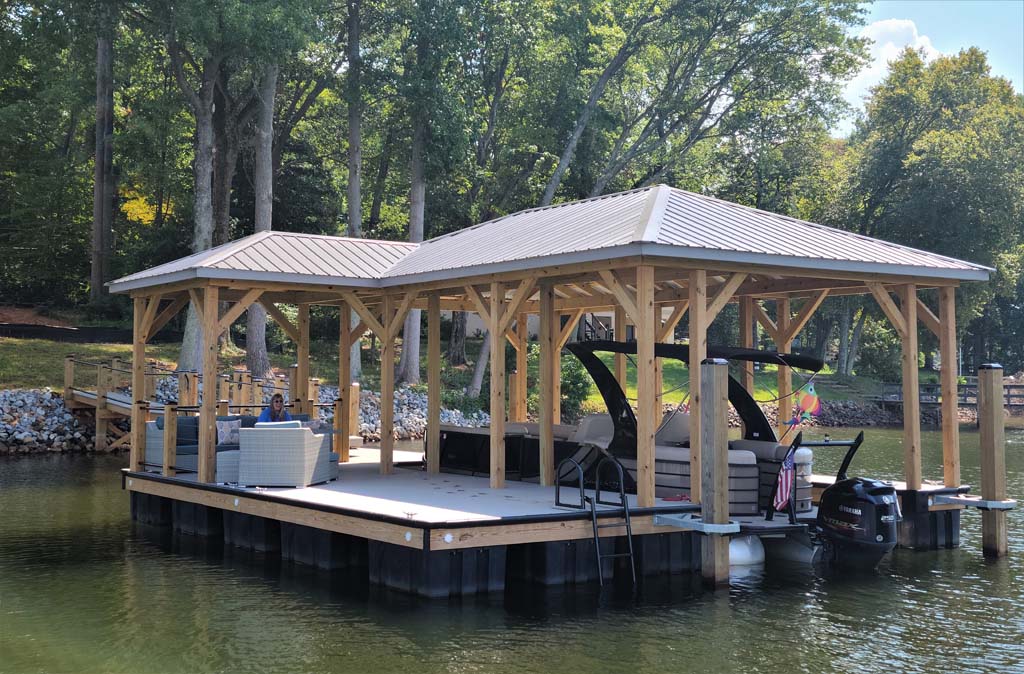How Floating Dock Company Competence Can Elevate Your Waterfront Experience
How Floating Dock Company Competence Can Elevate Your Waterfront Experience
Blog Article
Create the Perfect Docking Service With Floating Docks
Floating docks existing a flexible remedy for a range of maritime needs, adapting effortlessly to rising and fall water degrees and diverse vessel kinds. As we explore the necessary components that contribute to the efficiency of floating docks, several essential factors regarding security and upkeep will emerge, elevating concerns about just how to optimize your docking experience.

Advantages of Floating Docks
Floating docks deal countless benefits that make them an ideal choice for different maritime applications. One of the main benefits is their versatility to altering water levels. Unlike taken care of docks, floating docks increase and autumn with the trend, making certain consistent ease of access for vessels. This attribute is particularly important in areas prone to significant tidal changes or seasonal water degree changes.
Furthermore, floating docks are normally much easier and quicker to install contrasted to conventional set frameworks. Their modular layout permits for uncomplicated assembly and disassembly, helping with maintenance and moving when required. This flexibility is specifically valuable for short-lived applications or in atmospheres where problems may change.
Floating docks likewise tend to be extra eco-friendly, as they lessen disruption to the seabed and surrounding marine communities. Their resilient nature decreases the risk of damages to aquatic life, promoting a much healthier setting. These docks can be tailored to accommodate different vessel dimensions, ensuring that they satisfy details functional needs.
Eventually, the mix of adaptability, simplicity of installment, and ecological considerations makes floating docks an extremely reliable solution for a wide variety of maritime needs.
Choosing the Right Materials
Choosing the appropriate materials for floating docks is essential to make certain longevity, sturdiness, and security. The option of materials straight affects the dock's efficiency in numerous environmental conditions, including exposure to water, sunshine, and prospective wear from aquatic traffic.
Common materials used for floating docks include aluminum, wood, and high-density polyethylene (HDPE) Light weight aluminum is light-weight, corrosion-resistant, and needs marginal upkeep, making it a superb selection for long life. Its initial price can be greater compared to other products.
Timber, while visually appealing and providing a traditional appearance, can be at risk to rot and bug damage otherwise properly dealt with. Using pressure-treated timber or naturally durable varieties like cedar or redwood can minimize these concerns.
HDPE is a preferred selection because of its resistance to UV rays and chemicals, along with being eco friendly. floating dock services. It is offered and light-weight in different shades, permitting modification
Eventually, the right product option will certainly rely on details demands, including spending plan, wanted looks, and environmental factors to consider. Careful analysis of these variables will cause a resistant and successful floating dock option.
Design Considerations for Security
When making floating docks, guaranteeing security is an essential facet that can dramatically influence their capability and safety. Stability in floating dock layout is affected by numerous variables, consisting of buoyancy, weight circulation, and the plan of elements.
Weight distribution is essential; evenly dispersing tons across the dock protects against turning and enhances security. Broader designs can offer raised security, particularly in harsh water conditions, while longer docks might require added supports to prevent drooping.
One more vital consideration is the ecological impact, consisting of wave action and wind. Integrating attributes such as sidewalls or skirting can help minimize the results of environmental forces, keeping stability in adverse problems. Inevitably, a combination of thoughtful layout, material choice, and understanding of environmental aspects will generate a floating dock that satisfies both security and safety requirements.
Installation Tips and Methods

Next, protect the necessary authorizations and comply with local laws, which might dictate installation techniques and environmental factors to consider. Engage a certified contractor experienced in floating dock setups if called for. Use helpful resources premium materials designed for marine environments to improve longevity and durability.
When placing the dock, align it parallel to the coastline to promote easy gain access to. Ensure that the anchoring system is durable, employing concrete blocks or helical anchors to stabilize the dock against wind and wave action. It's crucial to make up seasonal water level changes, including possible ice movement in chillier climates.
Throughout the setup, double-check the dock's floatation and stability before settling the anchoring. On a regular basis check the installment for any indications of wear or damage. By complying with these ideas and methods, you can achieve a protected, functional, and aesthetically pleasing floating dock setup that fulfills your requirements.
Maintenance and Treatment Standards
Preserving and caring for floating docks is essential to lengthening their lifespan and guaranteeing secure use. Regular evaluations need to be conducted to determine any kind of indicators of wear, damages, or aquatic growth. Seek cracks, loose installations, or stained locations on the dock's surface area, as these problems can compromise structural stability.
Cleaning is necessary. Make use of a pressure washing machine to eliminate algae, barnacles, and debris, which can build up gradually. For persistent development, take into consideration eco pleasant cleansing representatives that will not hurt aquatic life.
Additionally, check the mooring lines and supports regularly to guarantee they are safe and cost-free from corrosion. Change any torn or harmed lines immediately to preserve stability.
Throughout severe weather condition, such as storms or freezing conditions, take preventive actions. Protect the dock with additional mooring lines and, if feasible, get rid of any kind of detachable components to avoid damages.
Final Thought
In conclusion, the application of floating docks provides a functional and effective docking option ideal for various maritime applications. With correct installation and routine upkeep, floating docks can offer efficient and reliable docking experiences for a broad variety of vessels.
As we discover the important components that contribute to the effectiveness of floating docks, numerous key aspects concerning security and upkeep will certainly emerge, increasing inquiries about exactly how to enhance your docking experience. Unlike dealt with docks, floating docks rise and fall with the tide, making sure regular ease of access for vessels.When creating floating docks, guaranteeing security is a basic facet that can substantially impact their capability and safety. Security in floating dock layout is influenced by various elements, including buoyancy, weight distribution, and the arrangement of components. Eventually, a combination of thoughtful moved here style, material choice, and understanding of environmental elements will yield a floating dock that satisfies both stability look what i found and safety requirements.
Report this page